Politics
Soldiers guard Nepal’s parliament after two days of deadly protests
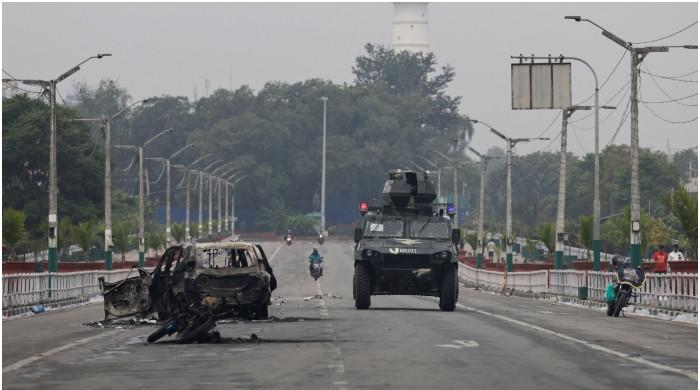
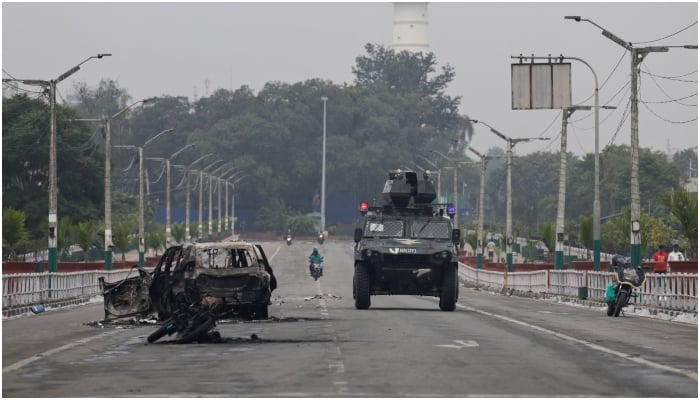
- City airport is closed until Wednesday evening.
- Prohibitory orders nationwide to stay until Thursday.
- Relevant groups coordinating to tackle situation: army.
Armed soldiers guarded Nepal’s parliament on Wednesday, amid streets deserted after an indefinite curfew was clamped on the capital, Kathmandu, following two days of deadly anti-graft protests that spurred Prime Minister KP Sharma Oli to resign.
The worst upheaval in decades in the poor Himalayan nation was unleashed by a social media ban announced last week but rolled back after 19 people died on Monday as police fired tear gas and rubber bullets to control crowds.
Burnt vehicles and twisted metal heaps littered the area around parliament, where army firefighters battled to douse a blaze in the main hall, while the exterior was charred after angry protesters set it ablaze on Tuesday.
Among the victims of the violence was Rajyalaxmi Chitrakar, wife of former prime minister Jhalanath Khanal, who died after protesters allegedly set her home on fire, according to family members.
“We are trying to normalise the situation first,” army spokesman Raja Ram Basnet said. “We are committed to protect the life and property of people.”
Armoured vehicles kept vigil in streets deserted except for a few strollers, with shops and markets shut.
Several other government buildings, from the supreme court to ministers’ homes, including Oli’s private residence, were also set ablaze in Tuesday’s protests, with the unrest subsiding only after the resignation.
Flights were disrupted, with the main airport in Kathmandu shut until 6pm (1215 GMT), an airport spokesperson said.
Talks to defuse crisis
In an appeal on X, the army said prohibitory orders would stay until Thursday morning, adding that relevant parties were coordinating to tackle the situation after the protest and resolve the issue.
The media also said preparations were being made for authorities and protesters to hold talks, without giving details. Reuters could not independently confirm the information.
Former Supreme Court judge Balaram KC urged the protesters to set up a negotiation team, with the army helping to maintain law and order, and called for fresh elections.
“Parliament should be dissolved and fresh elections held,” the constitutional expert told Reuters. “They should discuss forming the next caretaker government.”
Most of the protesters were young people voicing frustration at the government’s perceived failure to fight corruption and boost economic opportunities.
For years, a lack of jobs has driven millions to seek work in countries such as Malaysia, the Middle East and South Korea, mainly on construction sites, so as to send money home.
Wedged between India and China, Nepal has struggled with political and economic instability since protests led to the abolition of its monarchy in 2008.
India’s security cabinet also met late on Tuesday to discuss the situation in its neighbour.
“Nepal’s stability, peace, and prosperity are of utmost importance,” Prime Minister Narendra Modi said in a post on X later. “I humbly appeal to all my brothers and sisters in Nepal to maintain peace and order.”
Politics
Trump seeks trade war truce with China’s Xi in key South Korea talks
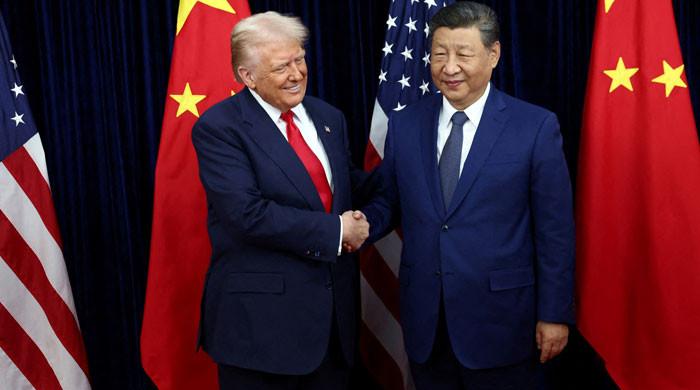
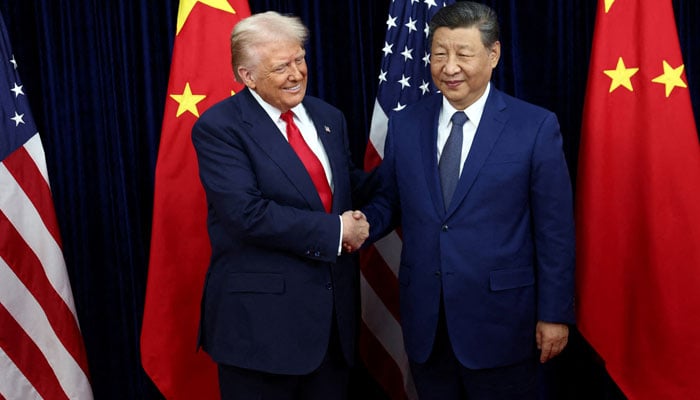
Both sides escalated trade threats for leverage.
Fentanyl issue is a key topic for Trump in talks.
Taiwan tensions loom over US-China discussions.
US President Donald Trump met with China’s leader Xi Jinping at a South Korean air base on Thursday for discussions on a possible trade war truce between the world’s two largest economies.
The meeting in the southern port city of Busan, the first between the leaders since Trump returned to office in January, caps off the US president’s whirlwind trip around Asia.
“We are going to have a very successful meeting, I have no doubt. But he is a very tough negotiator,” Trump said as he shook hands with Xi, who showed little expression.
Trump has repeatedly expressed optimism about reaching an agreement with Xi during the talks, taking place on the sidelines of the Asia-Pacific Economic Cooperation (APEC) summit, buoyed by a breakthrough in trade talks with South Korea on Wednesday.
But with both countries increasingly willing to play hardball over areas of economic and geopolitical competition – which analysts see as a new Cold War – many questions remain about how long any trade detente may last.
The trade war reignited this month after Beijing proposed dramatically expanding curbs on exports of rare-earth minerals vital for high-tech applications, a sector China dominates.
Trump vowed to retaliate with additional 100% tariffs on Chinese exports, and with other steps, including potential curbs on exports to China made with US software – moves that could have upended the global economy.
“THE G2 WILL BE CONVENING SHORTLY,” Trump posted on Truth Social shortly before landing in Busan to meet Xi at a South Korean air force base at Gimhae airport.
In a separate post, he said the US would step up testing of nuclear weapons immediately, noting China’s growing arsenal.
US expects Beijing to delay rare earth controls
After a weekend scramble between top trade negotiators, US Treasury Secretary Scott Bessent said he expected Beijing to delay the rare earth controls for a year and revive purchases of US soybeans critical to American farmers, as part of a “substantial framework” to be agreed by the leaders.
Ahead of the summit, China bought its first cargoes of US soybeans in several months, Reuters reported exclusively on Wednesday.
The White House has signalled it hopes the summit will be the first of several between Trump and Xi in the coming year, including possible leader visits to each country, indicating a protracted negotiation process.
But Trump wants some quick progress in talks being closely watched by businesses worldwide.
Trump said on Wednesday he expects to reduce US tariffs on Chinese goods in exchange for Beijing’s commitment to curb the flow of precursor chemicals to make fentanyl, a deadly synthetic opioid that is the leading cause of American overdose deaths.
Trump has also said he might sign a final deal with Xi on TikTok, the social media app that faces a US ban unless its Chinese owners divest their US operations.
Beijing is willing to work together for “positive results”, foreign ministry spokesperson Guo Jiakun said on Wednesday.
Prior deals on tariffs and rare earths due to expire
Previous deals, which brought down retaliatory tariffs sharply to about 55% on the US side and 10% on the Chinese side and restarted the flow of rare earth magnets from China, are due to expire on November 10.
Bessent said China had agreed to help curb the flow of fentanyl precursors, but did not say whether the US had made any concessions in return.
Beijing has sought the lifting of 20% tariffs over fentanyl, an easing of export controls on sensitive US technology, and a rollback of new US port fees on Chinese vessels aimed at combating China’s global dominance in shipbuilding, ocean freight and logistics.
Trump’s meeting with Xi comes at the end of a five-day trip to Asia in which he signed pacts with Japan and Southeast Asian nations on rare earths, seeking to blunt China’s stranglehold on minerals used in everything from cars to fighter jets.
Tensions over Taiwan
Regional strategic tensions, particularly over Beijing-claimed Taiwan, a US partner and high-tech powerhouse, are an ominous backdrop to the summit.
On Sunday, Chinese state media said Chinese H-6K bombers recently flew near Taiwan to practise “confrontation drills.”
US Secretary of State Marco Rubio said Taiwan should not be concerned about the US-China talks, despite some experts expressing fears that Trump might offer concessions over the island. Washington is required under US law to provide Taiwan with the means to defend itself.
Politics
Pentagon told to restart nuclear tests ‘on equal basis’ with rivals
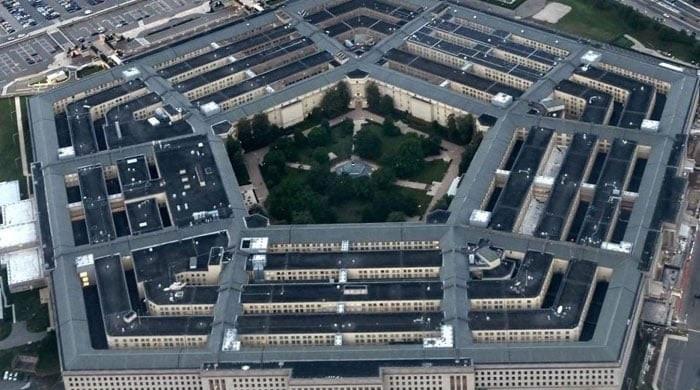
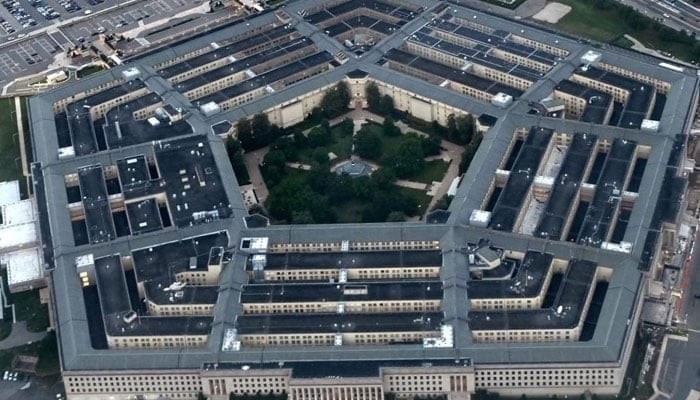
- Action taken ahead of Trump’s meeting with Xi in South Korea.
- US tests last conducted in 1992 to assess weapon reliability.
- New tests seen as signal of American strategic dominance.
US President Donald Trump, ahead of his meeting with Chinese President Xi Jinping on Thursday, said he has instructed the Department of Defence to immediately resume testing nuclear weapons on an “equal basis” with other nuclear powers.
“Because of other countries’ testing programmes, I have instructed the Department of War to start testing our Nuclear Weapons on an equal basis. That process will begin immediately,” Trump said on Truth Social, ahead of the meeting with Xi in South Korea.
“Russia is second, and China is a distant third, but will be even within 5 years,” Trump noted.
President Vladimir Putin said on Wednesday that Russia had successfully tested a Poseidon nuclear-powered super torpedo that military analysts say is capable of devastating coastal regions by triggering vast radioactive ocean swells.
As Trump has toughened both his rhetoric and his stance on Russia, Putin has publicly flexed his nuclear muscles with the test of a new Burevestnik cruise missile on October 21 and nuclear launch drills on October 22.
The United States last tested a nuclear weapon in 1992.
Tests provide evidence of what any new nuclear weapon will do – and whether older weapons still work.
Apart from providing technical data, such a test would be seen in Russia and China as a deliberate assertion of US strategic power.
The United States opened the nuclear era in July 1945 with the test of a 20-kiloton atomic bomb at Alamogordo, New Mexico, and then dropped atomic bombs on the Japanese cities of Hiroshima and Nagasaki in August 1945 to end World War Two.
Politics
Melissa kills at least 30 as this year’s most powerful hurricane batters Caribbean
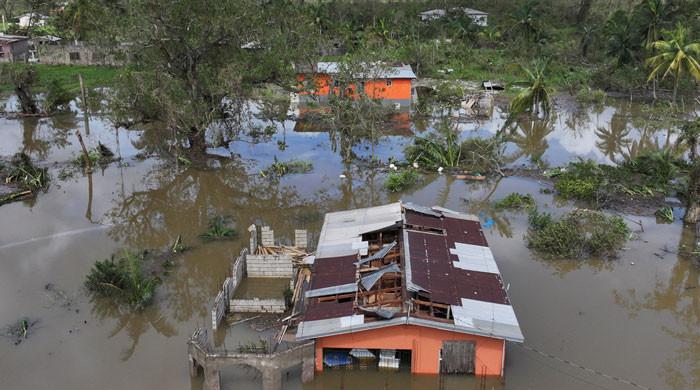
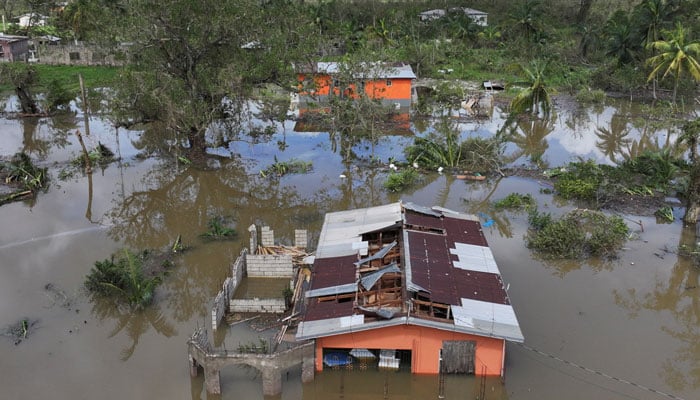
- Melissa strikes Jamaica as strongest-ever hurricane.
- Hurricane batters Jamaica with sustained winds of 185 mph.
- 10 children among 25 deaths reported in Haiti alone.
HAVANA/KINGSTON: Hurricane Melissa barreled through the Caribbean on Wednesday after thrashing Cuba’s second-biggest city, isolating hundreds of rural communities, unleashing devastation in Jamaica and drenching Haiti, where at least 25 were killed.
Melissa struck Jamaica on Tuesday as the strongest-ever hurricane to directly hit its shores, with sustained winds of 185 mph (298 kph), well above the minimum strength for a Category 5, the strongest classification for hurricanes.
As of 2100 GMT on Wednesday, Melissa was a Category 1 hurricane moving north-east through the Bahamas archipelago, which completed the air evacuation of nearly 1,500 people early.
The storm did not directly hit Haiti, the Caribbean’s most populous nation, but it hurled days of rain over the island nation. Authorities reported at least 25 deaths, largely due to floods in Petit-Goave, a coastal town 64 km (40 miles) west of the capital where a river burst its banks.
At least 10 children were killed there and 12 people remain missing there, Haiti’s disaster management agency said.
In Haiti, where a gang conflict has displaced over 1.3 million people, authorities said more than 1,000 homes were flooded. People living in makeshift camps said the flooding made it impossible to sit or sleep, and said the government and aid groups were slow to bring supplies.
Fortune Vital, a displaced man in Les Cayes, said he was separated from his family which already lacked sufficient food. “If the hurricane comes on top of all the problems we already have, we’ll simply die,” he said.
‘Like missiles blowing through the glass’
On Tuesday, Melissa made landfall in southwestern Jamaica, devastating areas already battered by last year’s Hurricane Beryl. US forecaster AccuWeather estimated Melissa cost $22 billion in damages and economic loss in Jamaica alone, and that rebuilding could take a decade or more.
Local authorities said flood waters had washed up four bodies in the southwestern agricultural hub of St. Elizabeth. About 77% of Jamaica was without electricity, authorities said on Wednesday morning. The capital Kingston was spared the worst damage and its main airport was set to reopen Thursday.
Prime Minister Andrew Holness visited Black River Hospital, the only public hospital in St. Elizabeth, where aerial footage showed the wrecks of buildings, roofs blown off, power cables knocked down and fields strewn with rubble.
Hospital workers there said the building showed some significant damage, and staff told the prime minister they spent the night fearing for their own families while working by flashlight to care for patients.
“It was the most terrifying experience in all my life,” a hospital worker said. “It is beyond imagining. At one point it was as if missiles were blowing through the glass.”
Jamaica’s government gave an “all clear” to begin recovery efforts, but said it would keep emergency shelters open through the week as people kept coming in from devastated homes.
Local government minister Desmond McKenzie said over 25,000 people had been admitted. “No one must be turned back from the shelters,” he said.
Mass evacuations in Cuba
Melissa was a still major Category 3 when it hit Cubaovernight with winds of 120 mph, landing in Guama, a rural, mountainous area some 25 miles (40 km) west of Santiago de Cuba, the island’s second-most populous city.
At least 241 communities remained isolated and without communications on Wednesday following the storm’s passage across Santiago province, according to preliminary media reports, affecting as many as 140,000 residents.
Across eastern Cuba, authorities evacuated around 735,000 people as the storm approached. Most remained in emergency centers.
No deaths were reported on Wednesday but President Miguel Diaz-Canel said the island had suffered extensive damage and warned of vigilance as rains continue to lash the region.
“A major hurricane landfall in the dark is incredibly dangerous,” AccuWeather lead hurricane expert Alex DaSilva said.
“The storm lost wind intensity as it interacted with the mountains of southeast Cuba, but the forced upward motion of the air over the mountainous terrain is squeezing out tremendous amounts of rainfall.”
Cuban officials also warned of severe impact on crops ahead of the Northern Hemisphere’s winter growing season.
Cuba was already suffering from food, fuel, electricity and medicine shortages that have complicated life, prompting record-breaking emigration since 2021.
On Wednesday, the UN General Assembly again voted overwhelmingly for the US to end its Cold War-era economic embargo on the communist-run country.
Loss and damage
Meteorologists at AccuWeather said Melissa ranked as the third-most intense hurricane observed in the Caribbean, after Wilma in 2005 and Gilbert in 1988 – the last major storm to directly hit Jamaica.
But scientists say hurricanes are intensifying faster with greater frequency as a result of warming ocean waters caused by greenhouse gas emissions. Many Caribbean leaders have called on wealthy, heavy-polluting nations to provide reparations in the form of aid or debt relief to tropical island countries.
The Caribbean Community Climate Change Centre, a branch of regional bloc CARICOM, issued a statement in solidarity of those affected by Hurricane Melissa and called for stronger efforts to curb climate change.
It said Melissa’s rapid intensification, fueled by record-breaking Caribbean sea temperatures, underscored need for the U.N.’s “loss and damage” fund to be scaled up.
The fund was established in 2023 as a mechanism for developing nations to quickly and reliably access financing to recover from more frequent extreme weather events. However, donations from wealthy, polluting nations have fallen short of targets and the US withdrew from its board in March.
The devastation caused by Melissa drew an outpouring of support from across the world, with some countries pledging support in the form of cash, food aid and rescue teams.
In Montego Bay, a popular Jamaican tourist destination, a resident told Reuters the water reached her waist and rescuers had to break into her home to save her and her child.
“All the trees that my dad planted, all of them are gone,” she said.
-

 Fashion1 week ago
Fashion1 week agoThe North Face and Cecilie Bahnsen launch second collaboration
-

 Tech1 week ago
Tech1 week agoThis Smart Warming Mug Is Marked Down by $60
-
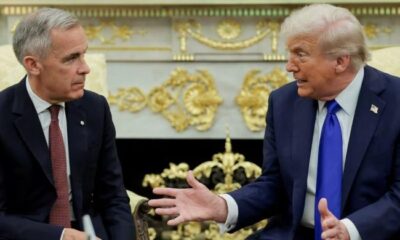
 Politics5 days ago
Politics5 days agoTrump slams ‘dirty’ Canada despite withdrawal of Reagan ad
-
Sports1 week ago
These five NBA players could be ready for an all-star breakthrough
-
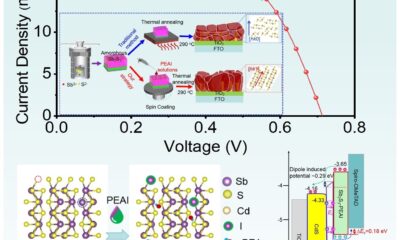
 Tech6 days ago
Tech6 days agoDefect passivation strategy sets new performance benchmark for Sb₂S₃ solar cells
-

 Tech1 week ago
Tech1 week agoAn Amazon outage has rattled the internet. A computer scientist explains why the ‘cloud’ needs to change
-

 Business7 days ago
Business7 days agoJLR shutdown after cyber hack drives slump in UK car production
-

 Sports1 week ago
Sports1 week agoWomen’s World Cup: Pakistan’s campaign ends with South Africa loss






